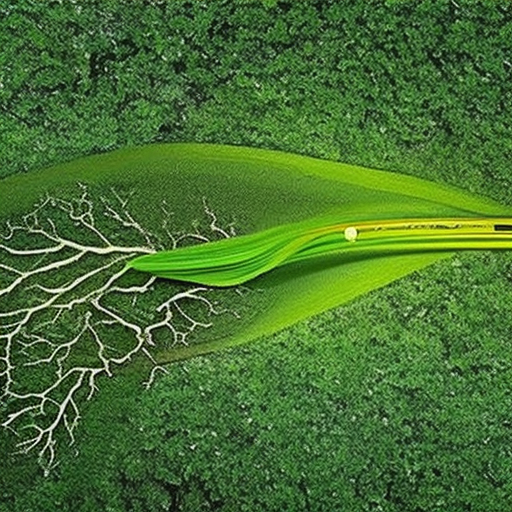Eco-friendly Design: Creating Sustainable and Environmentally Conscious Solutions
Eco-friendly design, also known as sustainable design or green design, is an approach to creating products, buildings, and systems that minimize negative environmental impacts while maximizing positive social and economic benefits. It involves considering the entire lifecycle of a product or project, from the extraction of raw materials to its disposal or reuse.
Principles of Eco-friendly Design
Eco-friendly design is guided by several key principles:
1. Resource Efficiency: Designers strive to minimize the use of non-renewable resources and reduce waste. This can be achieved through the use of recycled materials, efficient manufacturing processes, and energy-saving technologies.
2. Renewable Energy: The integration of renewable energy sources, such as solar or wind power, is a crucial aspect of eco-friendly design. By harnessing clean energy, designers can reduce reliance on fossil fuels and decrease greenhouse gas emissions.
3. Life Cycle Assessment: Eco-friendly design considers the entire life cycle of a product, from its production to its disposal. This assessment helps identify areas where improvements can be made to reduce environmental impacts, such as choosing materials with lower carbon footprints or designing for disassembly and recycling.
4. Biophilic Design: Biophilic design aims to reconnect people with nature by incorporating natural elements into the built environment. This can include the use of natural light, indoor plants, and green spaces, which have been shown to improve well-being and productivity.
5. Water Conservation: Eco-friendly design seeks to minimize water consumption through the use of efficient fixtures, rainwater harvesting systems, and water-efficient landscaping. This helps preserve this precious resource and reduce strain on local water supplies.
Applications of Eco-friendly Design
Eco-friendly design can be applied to various fields, including:
1. Architecture and Construction: Sustainable architecture focuses on designing buildings that are energy-efficient, use environmentally friendly materials, and integrate renewable energy systems. This includes features such as green roofs, passive heating and cooling, and efficient insulation.
2. Product Design: Eco-friendly product design involves creating goods that have a minimal environmental impact. This can include using recycled or biodegradable materials, reducing packaging waste, and designing products that are durable and repairable.
3. Transportation: Sustainable transportation design aims to reduce emissions and promote alternative modes of transportation. This can involve designing fuel-efficient vehicles, improving public transportation systems, and encouraging cycling and walking.
4. Urban Planning: Eco-friendly urban planning focuses on creating cities that are sustainable, livable, and resilient. This includes designing walkable neighborhoods, preserving green spaces, and implementing efficient waste management systems.
Benefits of Eco-friendly Design
Eco-friendly design offers numerous benefits, including:
1. Environmental Protection: By minimizing resource consumption, reducing pollution, and conserving natural habitats, eco-friendly design helps protect the environment and mitigate climate change.
2. Improved Health and Well-being: Green buildings and spaces have been shown to improve air quality, reduce noise pollution, and enhance occupant well-being. Additionally, sustainable transportation options promote physical activity and reduce air pollution, leading to better public health.
3. Cost Savings: While eco-friendly design may require upfront investments, it often results in long-term cost savings. Energy-efficient buildings, for example, can significantly reduce energy bills, and sustainable transportation options can save individuals money on fuel and maintenance.
4. Enhanced Reputation: Embracing eco-friendly design can enhance a company’s reputation and attract environmentally conscious customers. Consumers are increasingly seeking products and services that align with their values, making sustainability a competitive advantage.
5. Job Creation: The shift towards eco-friendly design creates new job opportunities in fields such as renewable energy, green construction, and sustainable manufacturing. This helps stimulate economic growth while promoting a more sustainable future.
In conclusion, eco-friendly design is an essential approach to creating sustainable and environmentally conscious solutions. By considering resource efficiency, renewable energy, life cycle assessment, biophilic design, and water conservation, designers can minimize negative environmental impacts and maximize positive social and economic benefits. Eco-friendly design can be applied to various fields, including architecture, product design, transportation, and urban planning, and offers numerous benefits such as environmental protection, improved health and well-being, cost savings, enhanced reputation, and job creation.












